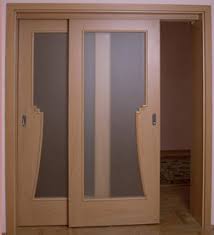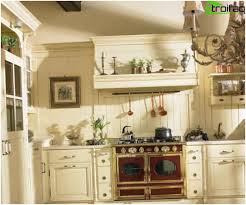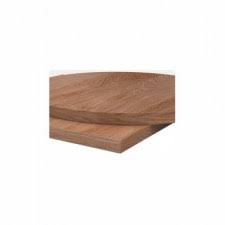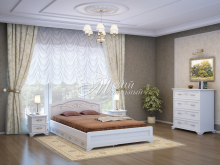Number and design of sliding doors
 Doors of a wardrobe are called door leafs or facades (the word sash is not very suitable here). There can be two, three, four, five, six sliding doors (facades), but two or three doors are more common. Facades are one of the expensive elements of a wardrobe, therefore, the more fraternities, the more expensive the materials from which they are made, the more complex the design, the more expensive the model.
Doors of a wardrobe are called door leafs or facades (the word sash is not very suitable here). There can be two, three, four, five, six sliding doors (facades), but two or three doors are more common. Facades are one of the expensive elements of a wardrobe, therefore, the more fraternities, the more expensive the materials from which they are made, the more complex the design, the more expensive the model.
What are the facades of wardrobes made of? From furniture plates (MDF, particleboard), frosted stained glass, mirrors, combined materials.
The most economical option is chipboard (laminated particleboard). This is a furniture plate with external decorative cladding, for example, wood-like, wicker. In one wardrobe, the chipboard can be combined with different decors, for example, under light and dark wood – bleached oak and wenge. A more expensive wardrobe may contain decorative inserts made of leather, bamboo, rattan, solid wood, stones, glass, mirrors.
Fully mirrored or glass facades will cost more than furniture panels, but here you can also combine, for example, two side panels made of chipboard, and in the center a mirror or glass door.
Mirrors, in turn, can be ordinary or tinted, glass – color, glossy, matte, with sandblasting with the application of the author’s drawing. Such an exclusive will cost a lot.
Posters are placed under the transparent glass of the facade, you can put a drawing on the mirror, etc.
If you are dealing with a serious company, you will be offered the services of a designer who will help you decide on the design taking into account the interior of the room in which the closet will be located, a wide selection of facade decoration options, an individual furniture project, the possibility of choosing sliding systems, cabinet interior filling in different price categories (for example, an ordinary cell basket, depending on the manufacturer, can cost 800 rubles and 25 thousand rubles).
Type of sliding systems. Steel and aluminum profiles
This is perhaps the most important component of a wardrobe. The door sliding system is a metal frame (profile) on the rollers (wheels) with which the door leaf moves. Since the doors are constantly operated, the basic requirements for the system are: strength, ability to withstand heavy loads, as well as easy, silent sliding of doors. Be sure to see for yourself, at the exhibition samples, how the proposed systems work, how convenient it is to use them.
It’s better not to save on profiles, otherwise pretty quickly it will become simply not convenient to use a beautiful sliding wardrobe: the doors will start to jam, creak, etc.
There are two types of systems – aluminum and steel. It is believed that an aluminum profile is more expensive, but it must be noted that much depends on the brand manufacturer of the profile. Since not many furniture companies produce their own profiles, they, of course, purchase profiles. And you can buy, as profiles of world brands, and Asian counterparts.
Note the most popular brands of profile manufacturers: Raumplus (Germany), DSN (Canada), Aristo, komandor, Stanley, Neves. Own profiles are issued by Mr. Dors (Largo and Arredo systems).
At will, the systems are equipped with useful mechanisms. For example, the mechanism that helps the door leafs to easily move apart, as well as a special fuse for the rollers, which does not allow the roller to slide off the rail, and the door will accordingly not jump out of its knurled track. Another well-known device is a door closer, or a self-closing mechanism. You just push the door and it slams shut gently. But such mechanisms may not be included in the standard equipment of the wardrobe, and are installed only at an additional cost.
internal filling (shelves, hung, baskets)
Common elements of the interior of a sliding wardrobe: hung (rods for hangers), shelves, drawers for linen. Popular accessories are honeycomb metal baskets, a hanger-lift, which makes it easy to get clothes from above (if the cabinet is up to the ceiling), retractable holders for trousers, belts and ties. The cost of these devices depends on the manufacturer. The most expensive European (Italy, Germany), cheaper – domestic, Asian.




